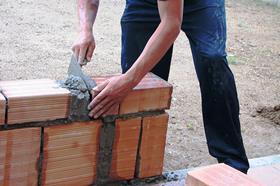Policy director says training body’s continued existence depends on ‘what industry wants to do’

The CITB has confirmed its future is safe until at least March 2018, in response to industry fears that the government’s planned all-industry levy could “kill off” the training body.
This week, trade body BSRIA became the latest organisation to raise fears over the CITB’s future, saying it has “expressed concern” over whether the new levy plans could “kill off the CITB.”
Speaking to Building, the CITB’s director of policy Steve Radley confirmed the future of the training body is secure to March 2018 under a parliamentary agreement to raise its levy until that date.
However, Radley added: “Ultimately, whether the CITB exists and what it does depends on what the industry wants to do.”
The CITB is currently carrying out an informal consultation with employers via workshops and telephone surveys.
Radley said: “It’s early days but what we are picking up is that employers value a range of things the CITB does, and they can see that the CITB is reforming itself to become more efficient and effective.
“What’s also clear is that it will be challenging to ask employers to pay both levies at the same, full rate.”
The CITB says it will discuss with larger firms how the new apprenticeship levy will affect their contribution to the CITB levy.
Radley said that under the government’s apprenticeship reforms to implement the Richard Review, “smaller firms may have to make an increased contribution to training provision”.
He also admitted the levy has caused uncertainty among employers, but said: “Our message to employers is to continue investing in apprenticeships and don’t let the uncertainty hold you back. The support is still there from the government and the CITB for firms to invest in skills.”
The CITB was subject to a government review on its future which was due to conclude last year, known as a Triennial Review, which has as yet not been published. Radley confirmed the review has not been published, adding “clearly the consultation complicates its conclusions”.




























No comments yet